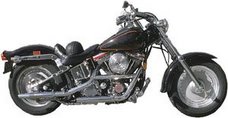PLASMA VS LIQUID COATINGS
Several companies offer to apply plasma or flame sprayed coatings to exhaust systems. Typically these will be some form of a Zirconia Ceramic, though they can be metallic as well. The claim is made that these are superior to “other” liquid types of coatings. The “Other” types are generally referred to as primarily being cosmetic. Is this true?When compared thickness for thicknes, no significant difference is observed. When compared by the cost, liquid coatings are much more affordable. In one current AD, by a well known Coating Company who promotes Plasma Sprayed coatings, the AD refers to a 3% to 5% gain in power. Significantly this is in line with our experience with the liquid type coatings we manufacture. In reality H.P. gains will vary considerably depending on a variety of factors. Keeping heat in will accelerate exhaust gas velocity and improve engine efficiency and power. In addition reduced under hood temperatures can increase H.P., by reducing the temperature of the intake charge. Gains of as much as 25 H.P. have been seen.
When you factor in the lower cost, better looks and the proximity of shops applying Tech Line products, it makes good sense to make use of the advanced liquid coating technology available. Not to mention the cost savings available from the coatings we sell that can be applied by the average enthusiast at home.
It should also be considered that for increases in thermal barrier efficiency two basic approaches exist. One is to simply apply a thicker coating. This not only increases cost but weight as well. By using two different liquid coatings, comparable gains can be made, while using a thinner overall coating. This occurs because heat has a tendency to slow when passing through dissimilar materials. An example will be a base coat of HHBK followed by a top coat of BHK. This is more efficient than a comparable coating thickness of just a single material.
An example of the efficiency of our coatings is seen in an independent test run by Competition Cams. They coated one header only on a BB Chevy. The coated side and the uncoated side were both instrumented. The surface temperatures were reduced approximately 300f and in fact the comment made by the technicians was, that just after a dyno pull you could grab the coated header with your hand and not get burned. The radiated heat measured 1 inch away from the coated header was a maximum of 80F and the uncoated side showed 200F. Exhaust gas temperatures were over 1500F.
Good Looks, Efficiency, Cost Savings and Less Weight. Sound good?
Saturday, June 23, 2007
Subscribe to:
Post Comments (Atom)


No comments:
Post a Comment